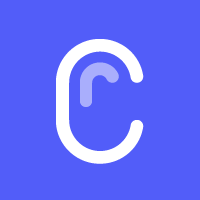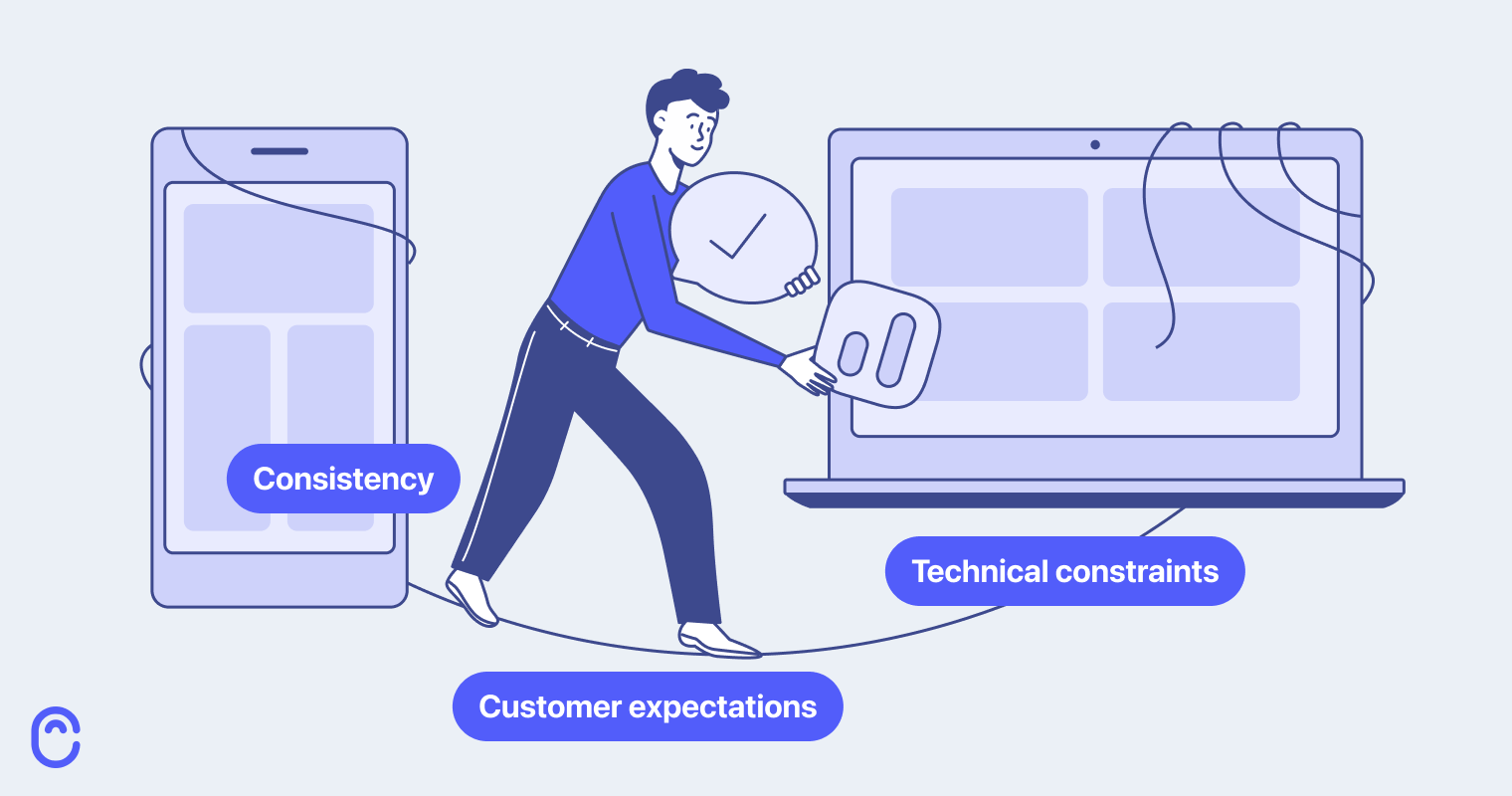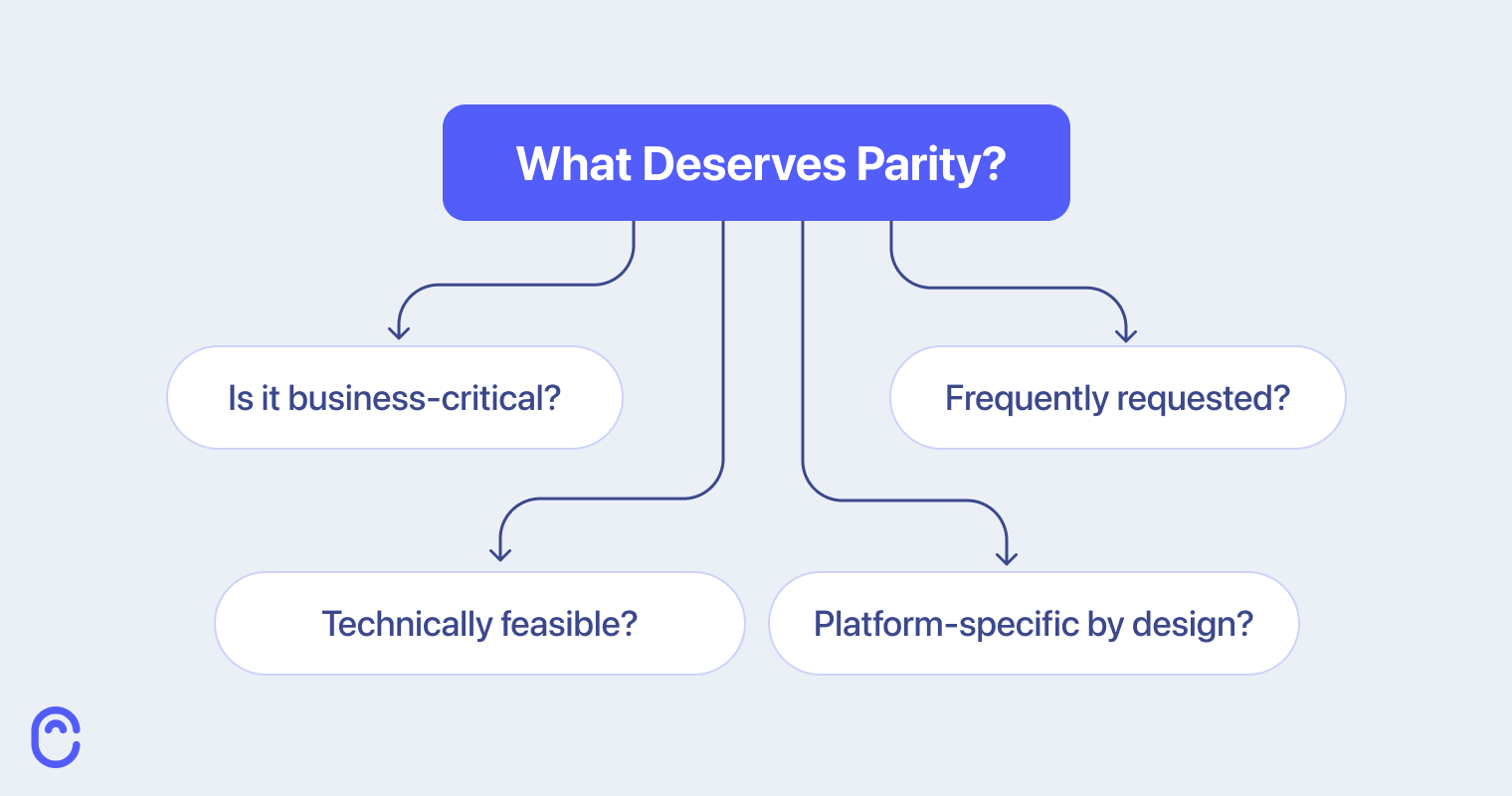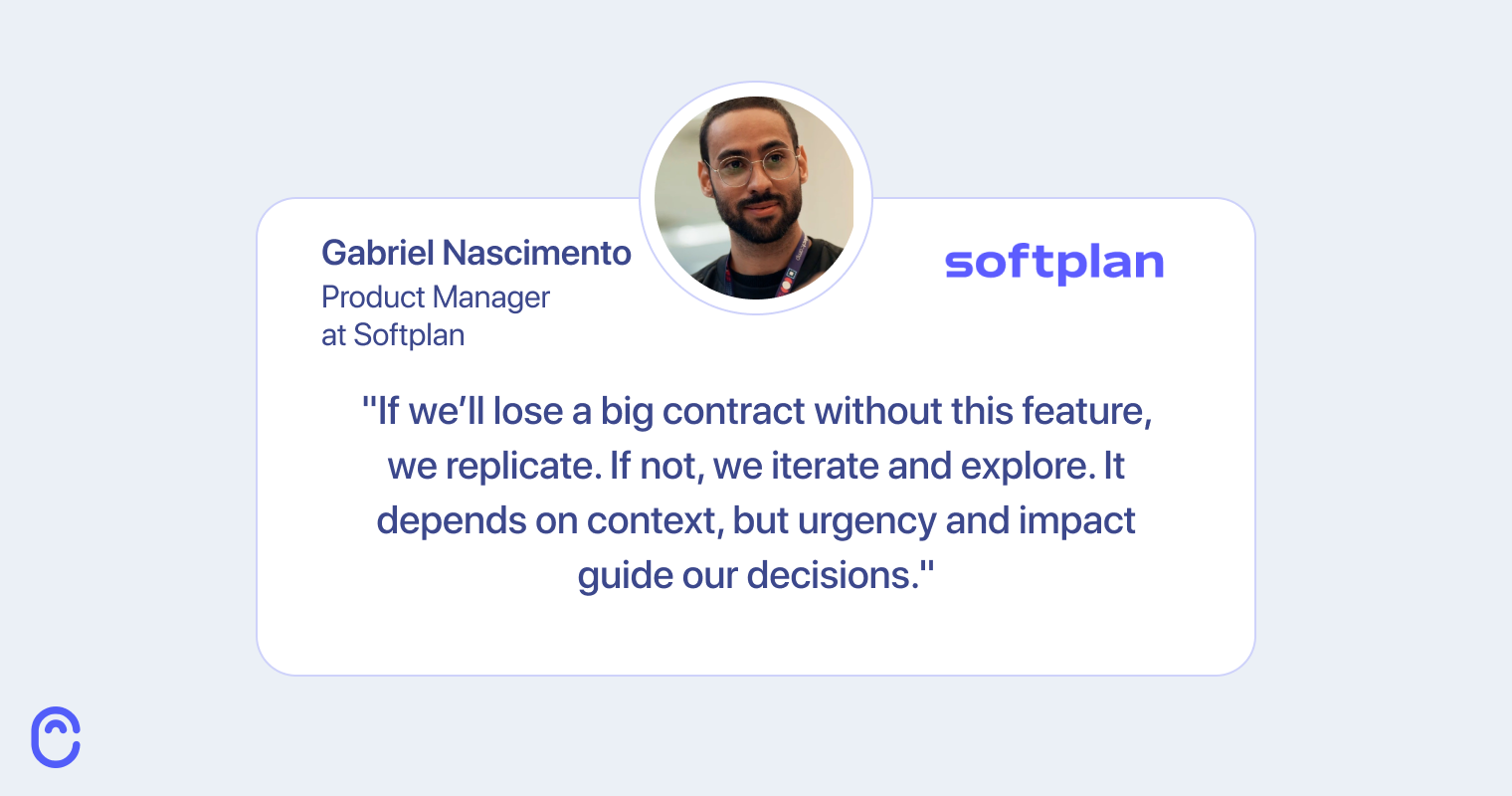Feature requests flood in from all directions. Not all of them reflect what users actually need.
Sometimes, people ask for a feature they never use. Other times, they churn because something they saw in a competitor’s product is missing.
That’s where parity gets tricky:
Both feature parity across platforms and competitor parity across products.
Platform parity means your product works the same on web, mobile, and desktop. It sounds great in theory. In practice, it’s hard. Resources are limited. Technical debt piles up. The roadmap moves fast.
Competitor parity is no easier. You don’t need to match everything your competitors are doing. It’s often more effective to double down on what makes your product unique and valuable to your users.
Still, consistency builds trust. Customers expect it…especially if you’re targeting larger teams or supporting cross-device workflows. And when they see something another product has that yours doesn’t? They notice.
So the big questions are:
When does feature parity matter? When does competitor parity matter? And when is chasing either one just a waste of time?
Keep reading to find out what product leaders from Figma, Coinbase, Basecamp, Doist, and more think about it. This guide breaks down what they shared with tips from our own team here at Canny.
We’ll cover:
- When parity helps
- When it hurts
- How to handle the messy in-between
- Real-world stories from SaaS teams
- A framework to help you decide
Let’s dive in.
1. When feature parity matters (and what to look for)
When people talk about feature parity, they usually mean one of two things:
Platform parity: making sure your product offers the same core features across platforms (web, mobile, desktop).
Competitor parity: ensuring your product keeps pace with—or exceeds—what similar tools in the market are offering.
Both types of parity matter. Platform parity affects usability and consistency. Competitor parity influences how your product is perceived in the market.
How do you know which parity issues are worth tackling?
That’s where tools like Canny’s feedback boards help. By tracking and tagging feedback by platform or referencing competitor mentions, product teams can start spotting patterns: what’s a nice-to-have vs. what’s starting to cost deals or frustrate users.
Sometimes parity helps. Other times, it creates extra work without a clear return.
Here are four situations where it’s worth the effort:
1. Selling to bigger customers
Enterprise clients expect polish. If your desktop app supports reporting but mobile doesn’t, that’s a red flag. Features tied to security, analytics, or team management need to be consistent. Gaps here can cost deals.
At the same time, if a competitor supports enterprise-grade permissions and you don’t, that might be a dealbreaker too. When missing features limit your ability to win deals, competitor parity becomes a strategic priority.
2. Supporting people on the go
Many users bounce between devices during the day. If your CRM doesn’t let reps edit a pipeline on mobile, they’ll notice. That friction adds up…and might push them to another tool.
Similarly, if your competitor’s mobile experience solves that pain point and yours doesn’t, users might switch. Platform and competitor parity go hand-in-hand when users expect seamless experiences.
3. Building long-term trust
When things work the same everywhere, people build habits. That leads to retention. It also means fewer surprises, which your support team will thank you for.
If users trust that your product will eventually match what they see elsewhere—whether across platforms or against competitors—they’re more likely to stick around.
4. Reducing confusion and support tickets
If your help docs say “duplicate this template” but that option’s missing on mobile, you’ll hear about it. Parity helps teams avoid that pain.
It’s the same with competitor comparisons. If a competitor’s feature set is influencing buyer expectations, mismatched functionality can create friction that your support and sales teams feel directly.
In short: aim for parity when inconsistency leads to real costs: for your users, your team, or your bottom line.
2. Why copying your competitors is risky
We’ve now covered the two types of parity. So let’s talk about where it goes wrong (particularly with competitor parity).
It’s tempting to match every feature your competitors ship, especially when users ask for it.
That said, chasing parity without a reason adds clutter. It bloats your product and slows your team down.
As Catherine Shyu, Product Lead at Coinbase, puts it:
“‘Feature parity’ should not be treated as a hard requirement… It’s a risky blanket statement that causes bloat by including all the mistakes you made while building the original product.”
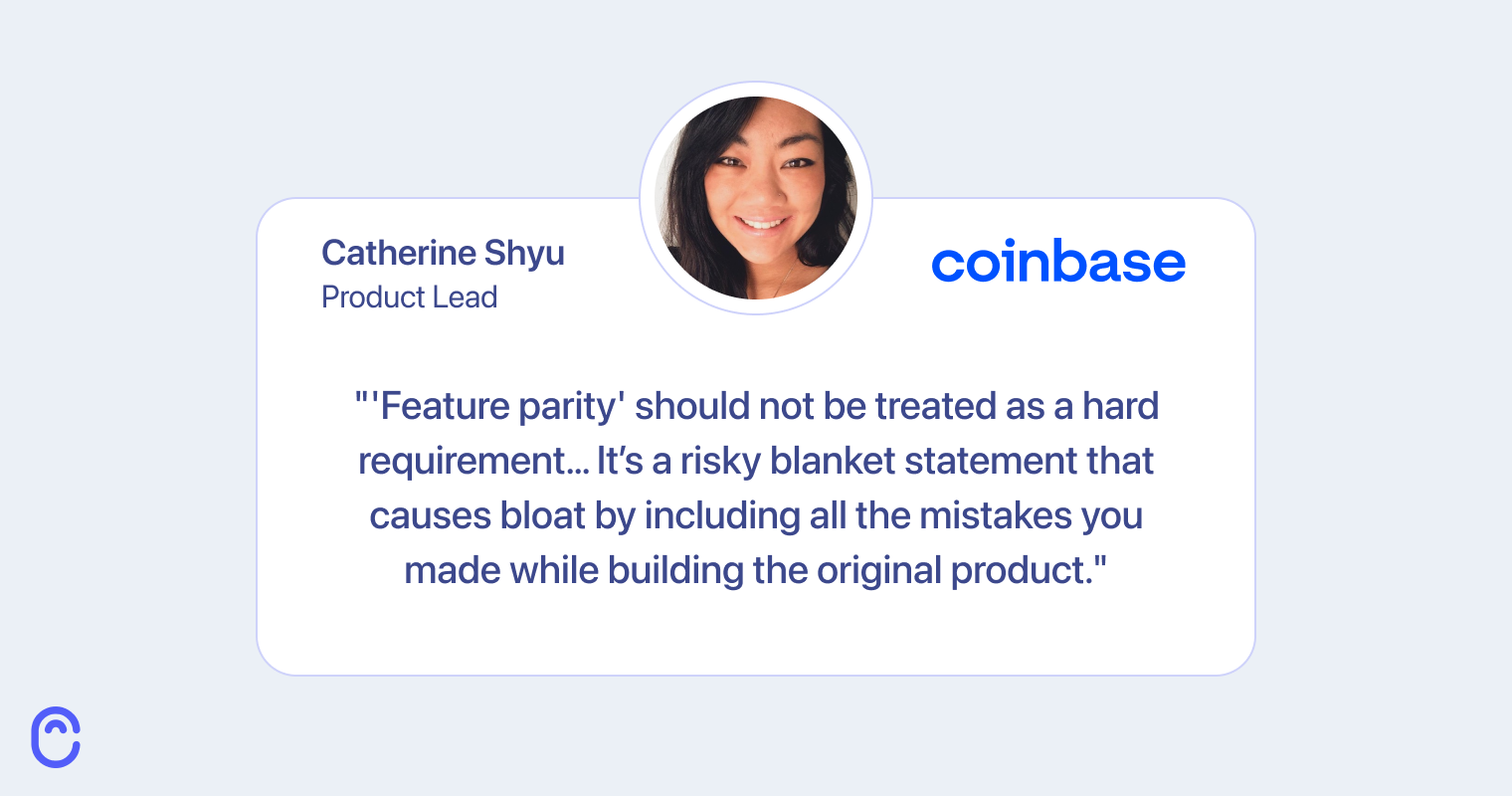
Jason Fried, Co-founder & CEO at Basecamp, agrees:
“Feature parity is called following. No thank you. You don’t get new if you’re focused on meeting up with old.”
Canny customers often tag competitor mentions in feature requests (e.g., “Airtable does this…” or “Notion has X”). Teams can then filter and group these tagged requests, making it easy to spot whether the pressure is coming from a small vocal group, or a meaningful chunk of users across segments.
This helps teams differentiate between competitor envy and competitor impact.
Watching your competitors too closely can throw you off track. Your product should solve real problems…not just check boxes.
Arjun V. Paul, CEO at Zoko, says it clearly:
“Stop copying your competitors’ features… Build with purpose, not paranoia.”
Our own Sarah Hum, from Canny, echoed that:
“We have a wealth of customer feedback… we’d be naive to blindly follow competitors.”
What to try:
- Use customer feedback to shape priorities
- Align product goals with user outcomes
- Evaluate competitor-inspired requests critically. Are users asking for the feature itself or the outcome it provides?
- Say no to reactive, copycat work that doesn’t support your strategy
- Use tools like Canny to separate signal from noise
3. When parity drives growth and satisfaction
In some cases, parity is more than nice—it’s key to growth.
Figma built up slowly. At launch, it didn’t match Sketch or Adobe XD on every feature. But it focused on what mattered.
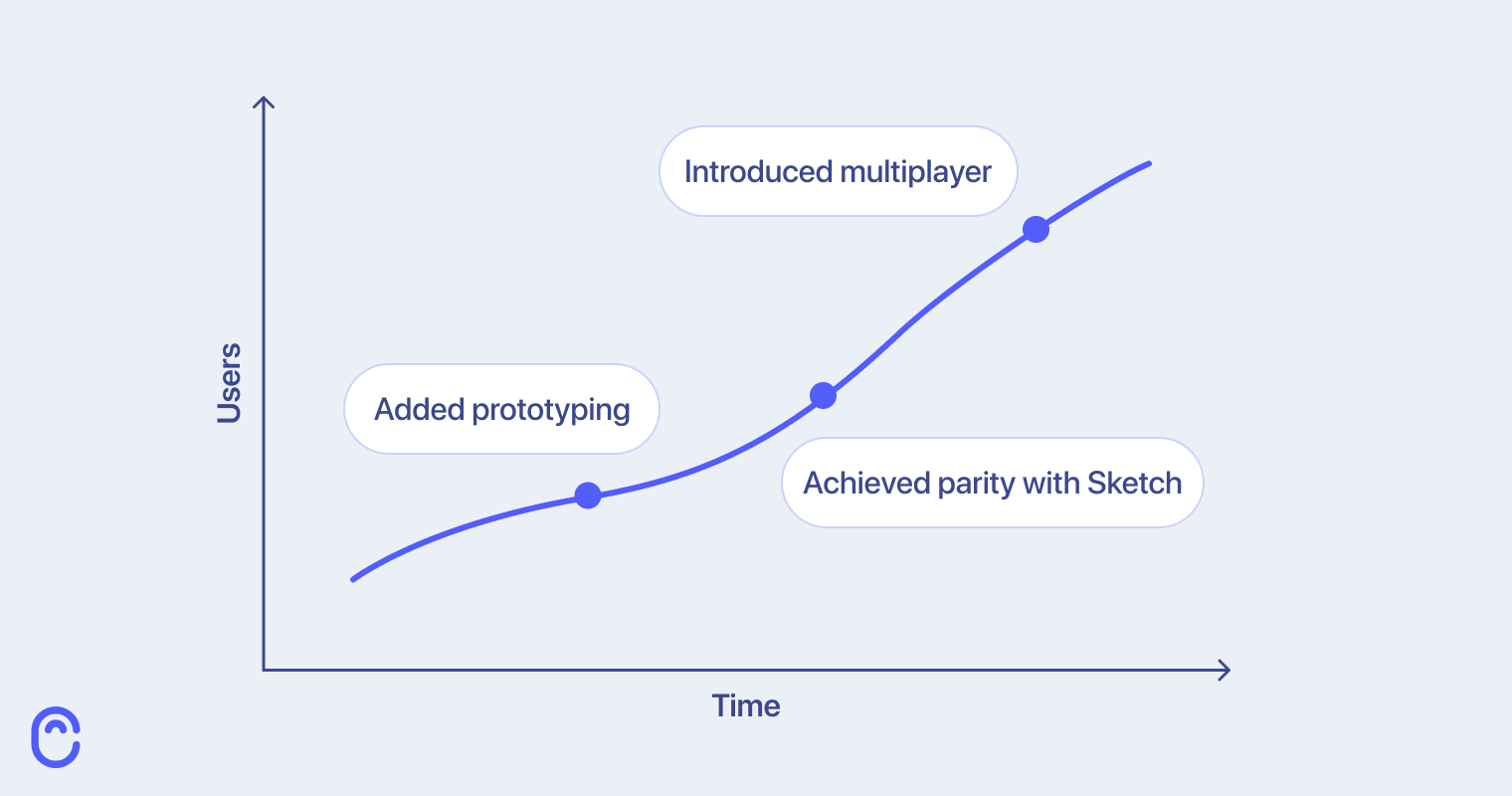
Dylan Field, Co-founder & CEO at Figma, explained their approach:
“As you add more parts to the house, more people are able to come in and enjoy it… achieving parity on key features brought more users in.”
This is a clear case of competitor parity used intentionally to grow adoption and win market share without bloating the roadmap.
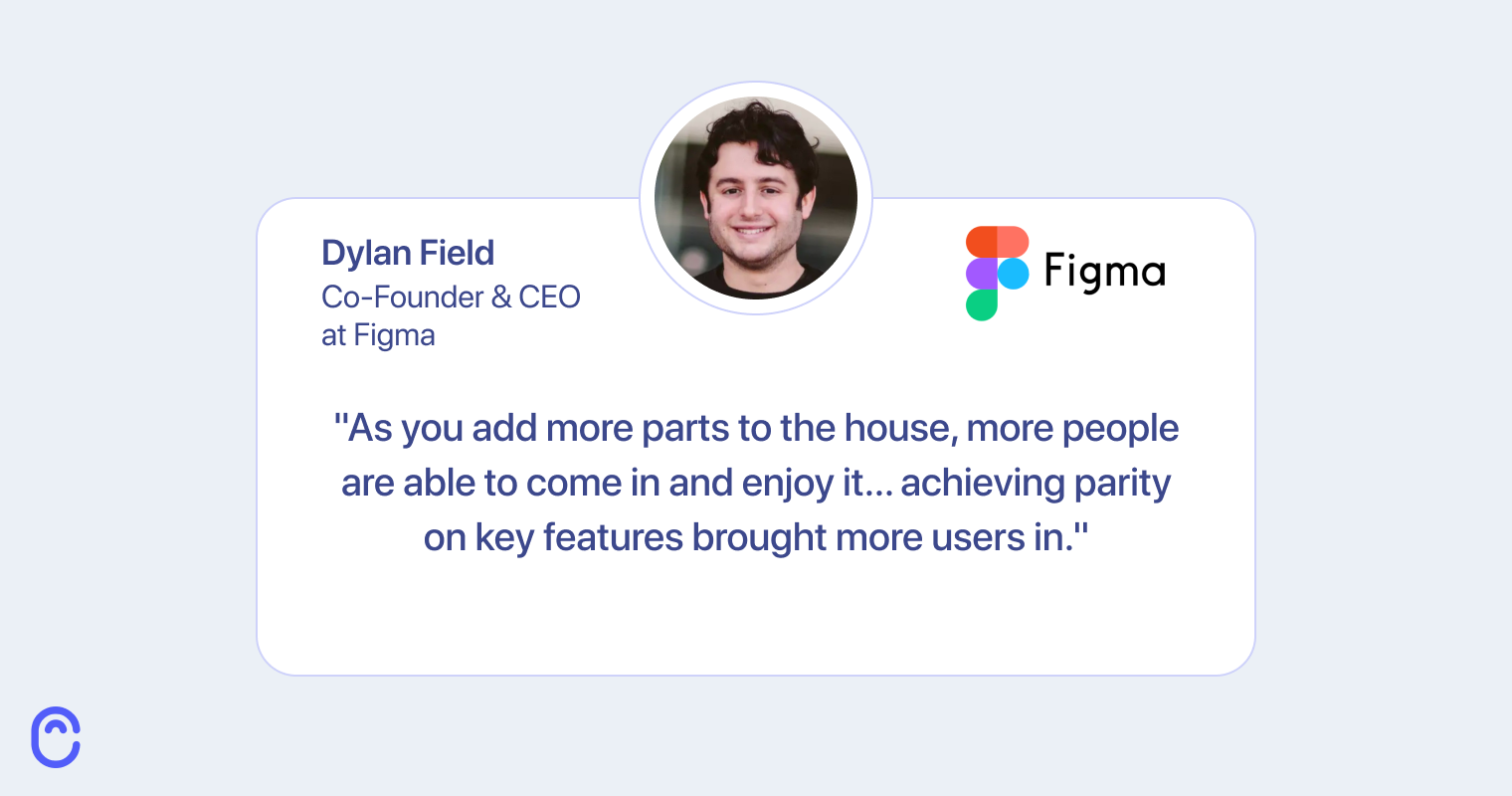
Doist (makers of Todoist and Twist) kept things consistent across devices. That commitment paid off.
Roman Imankulov, former Head of Web Development at Doist, shared:
“Feature parity is one of the main reasons our users love our apps, so if the release on one platform is delayed, it can cause a lot of frustration.”
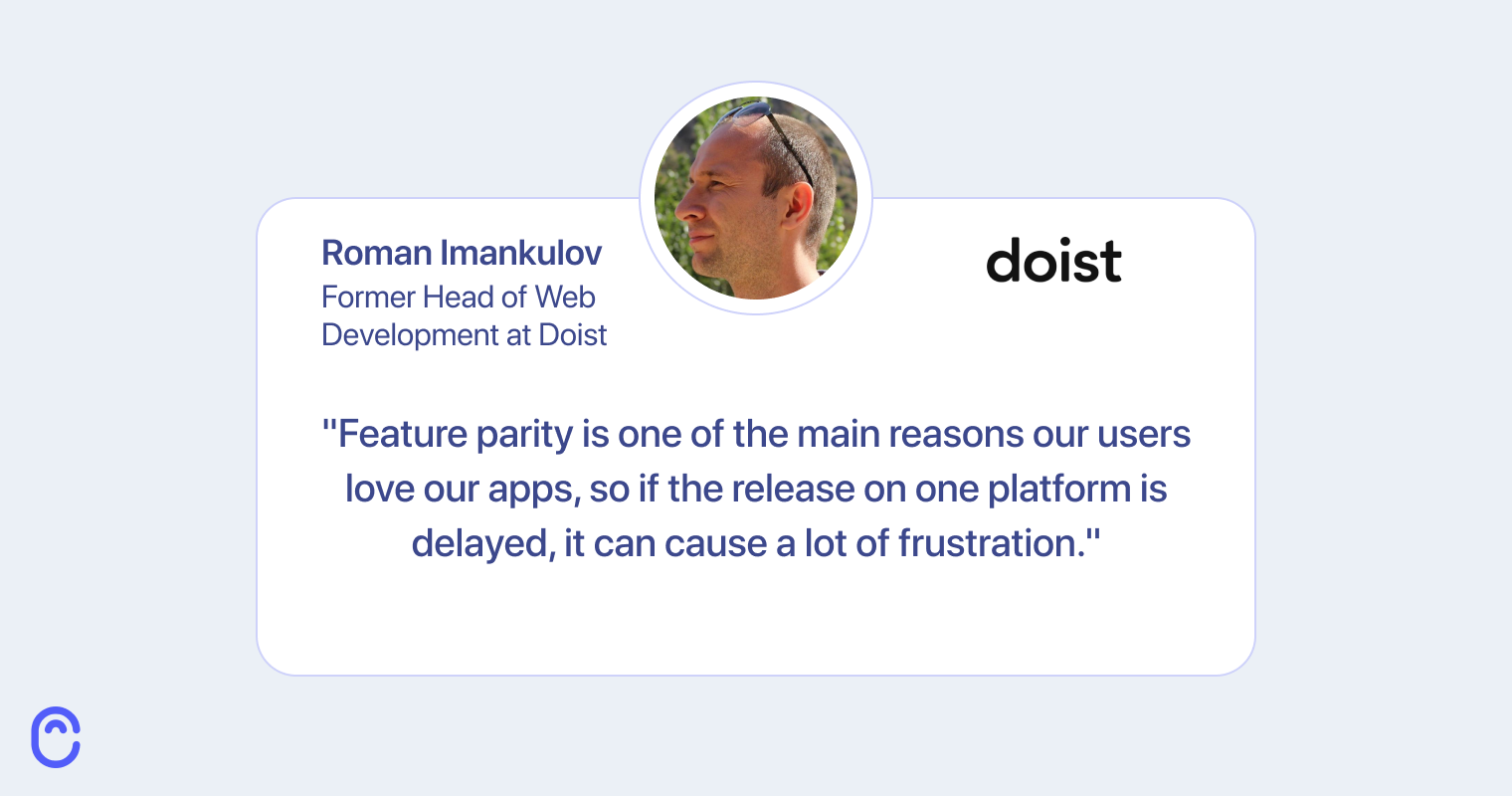
Akiflow, a productivity tool, was facing churn from users due to the lack of a mobile app—an issue of platform parity. By using Canny to track and prioritize feedback, they identified that mobile support was a top request. After launching the mobile app, they notified churned users via Canny. Many of them came back!
“When we first started, we didn’t have a mobile app, and many customers were churning because of that. We built the mobile app, notified churned customers through Canny, and saw many of them come back.” – Stefania Martinello, Product Manager at Akiflow
Missive prioritized feature parity that supported its pricing model.
Missive didn’t aim to match every feature competitors offered. Instead, it focused on key use cases that aligned with revenue.
As Rafael Masson, co-founder at Missive, shared:
“We prioritized by potential revenue. When someone requested a feature, we’d estimate how many other users would upgrade if we built it. That gave us an ‘order by MRR’ roadmap.”
This approach let them grow profitably without bloating the product, achieving meaningful parity where it mattered most.
This matches the Figma-style narrative of strategic prioritization for adoption and market fit.
What to try:
- Make a parity checklist per platform (based on user feedback)
- Use Canny to filter requests by platform and feature type
- Tag competitor-related requests to track expectations
- Measure time-to-complete for key tasks across platforms
- Prioritize the features with clear growth or retention impact
4. Lead with differentiation, not sameness
Successful software teams don’t start by copying others. Instead, they lead with something new.
Differentiation should come before competitor parity. Only once your unique value is clear should you consider closing gaps that users genuinely care about.
Matt Wensing, Founder & CEO at Summit, shared this:
“With Summit I went for differentiation first and am now backfilling with parity… People don’t talk about undifferentiated things.”
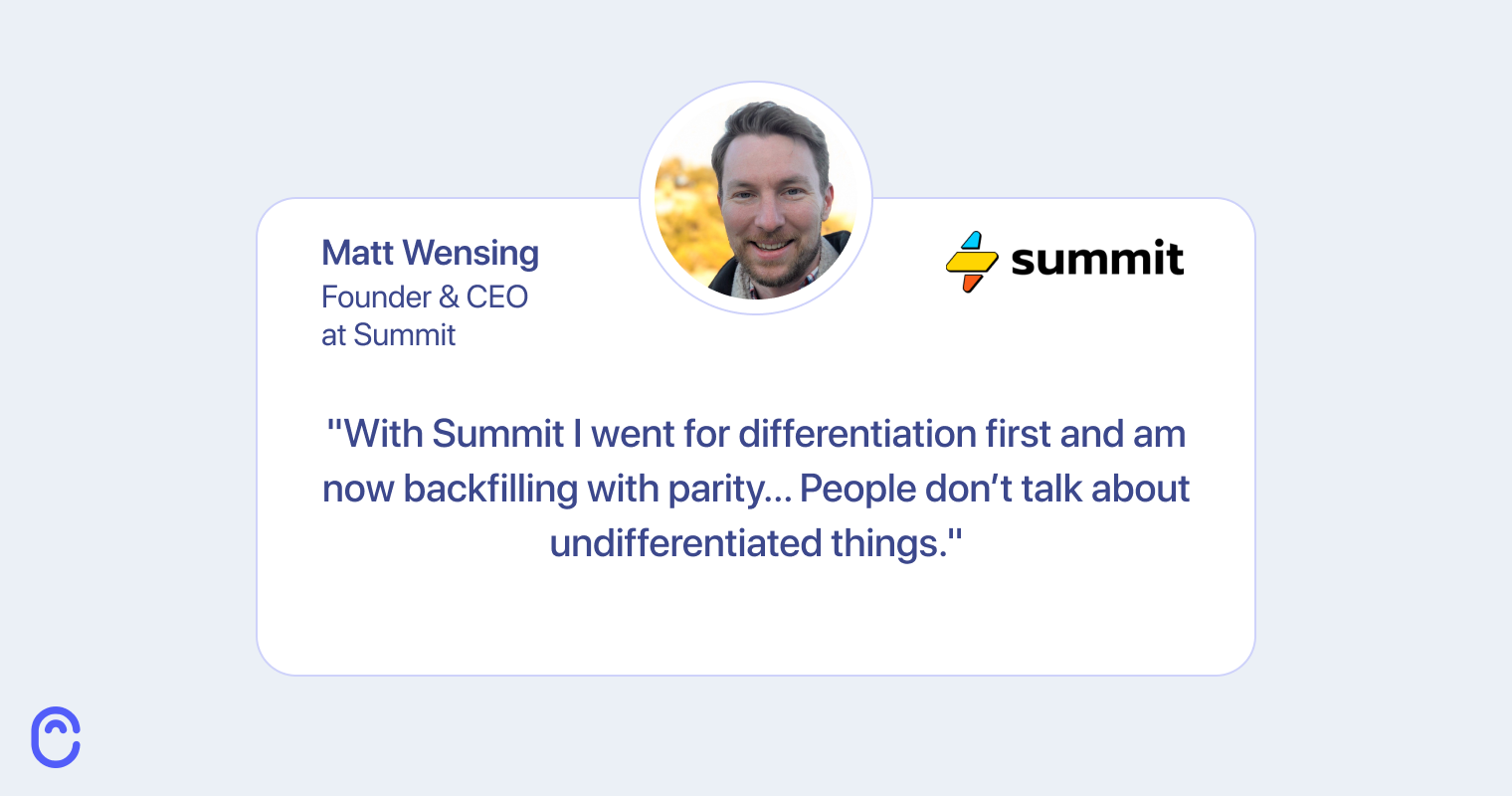
Ryan Wardell, Founder at StartupSauce, agreed:
“Rather than trying to keep up, focus on building the features that are most important for your niche market. It’s better to have a product that is the best at one thing.”
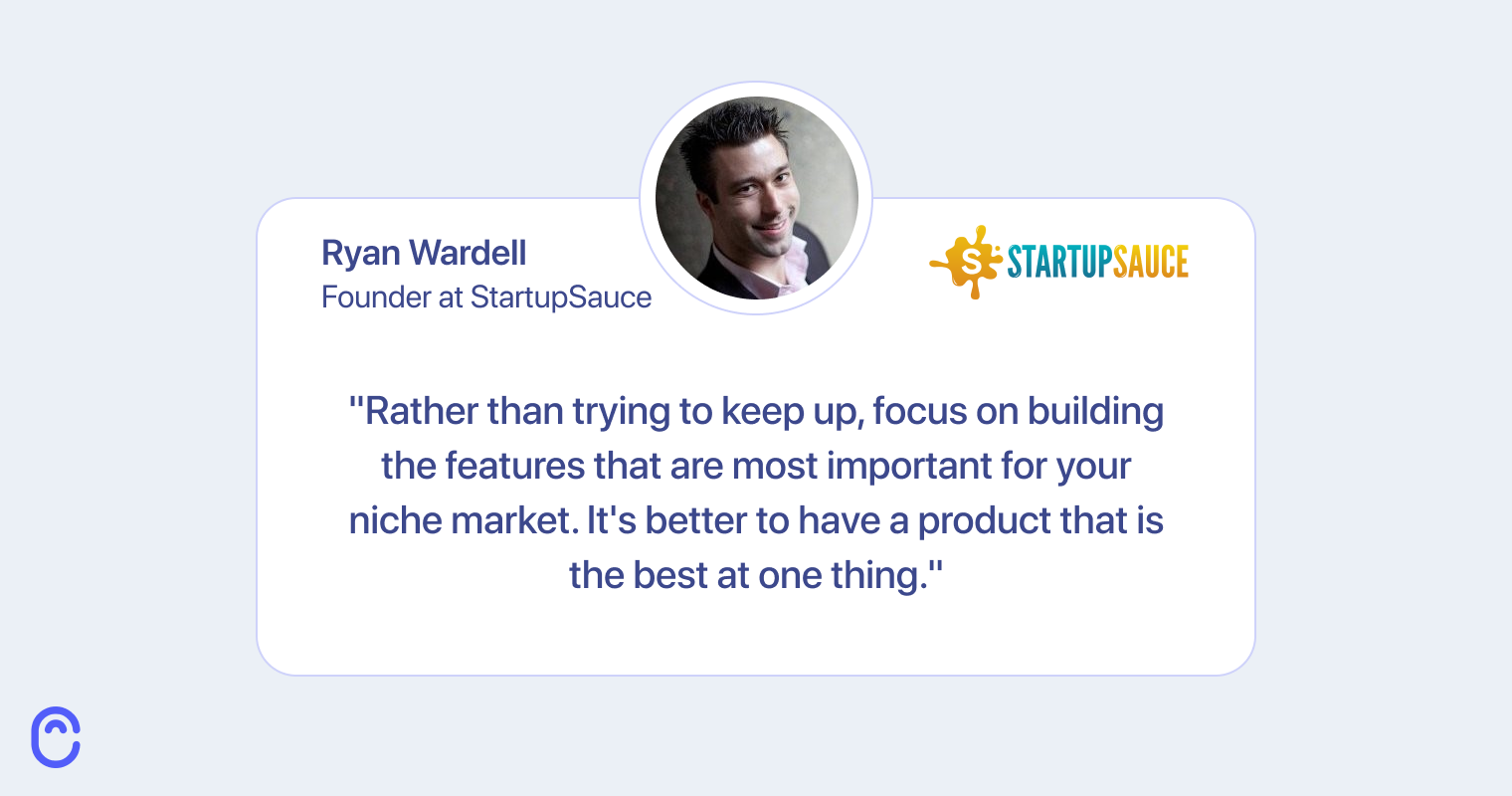
Missive, the collaborative email platform, had a huge surface area of potential features, and endless opinions from users.
To stay focused, co-founder Philippe Lehoux used Canny to sort feedback by revenue:
“At one point I discovered that I could order feature requests by MRR. And that was quite amazing.”
Instead of trying to match every competitor or build everything users requested, Missive leaned into what drove business value, and left the rest.
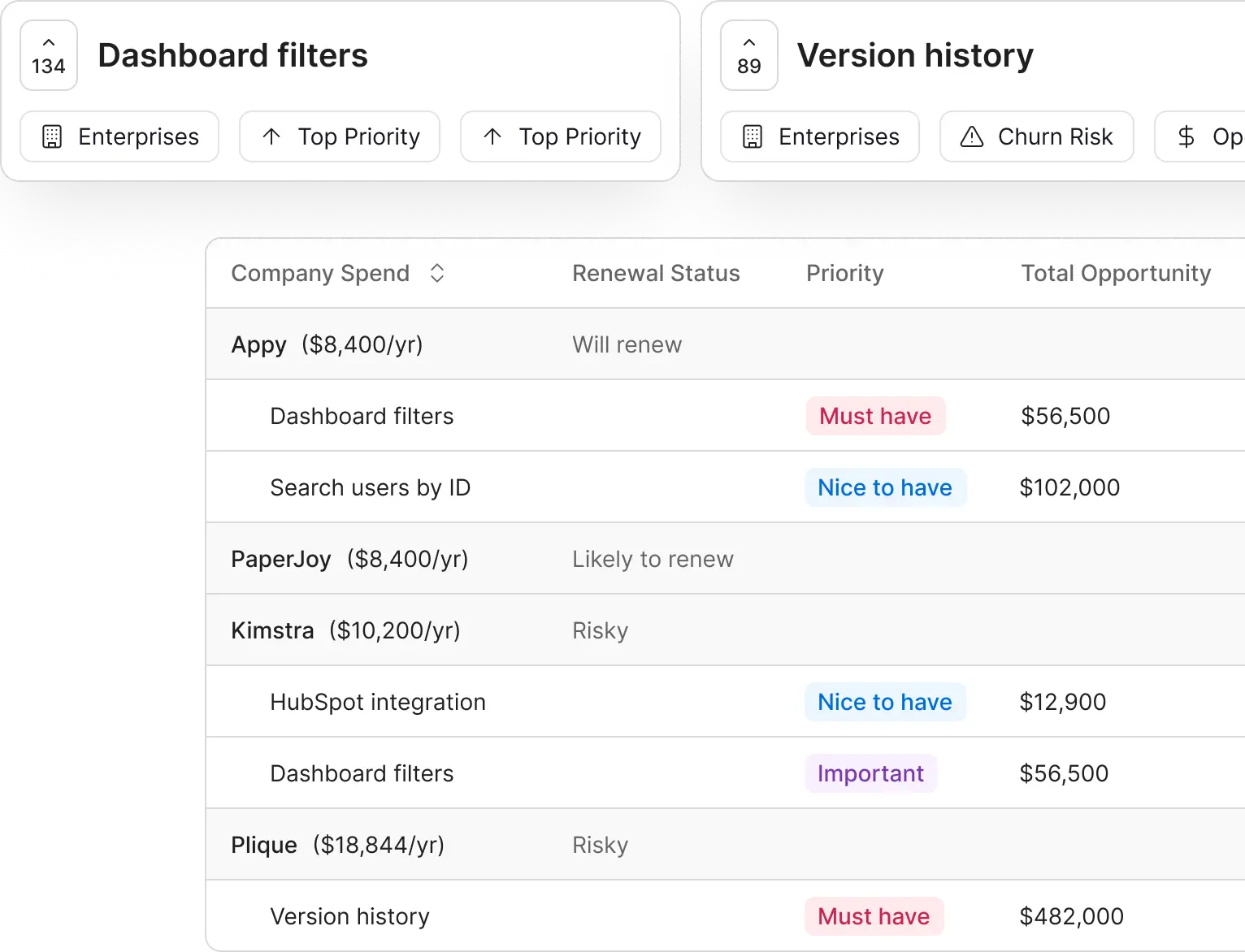
Trying to match your competitors from day one can slow you down and blur your vision. Instead, use your competitors as a signal, not a checklist.
What to try:
- Know your product’s unique strengths and lead with those
- Tag competitor-driven requests in Canny to watch them, but don’t act on all of them
- Use Canny’s voting and sorting features (like by MRR) to stay focused
- Add platform or competitor parity only after proving value
- Revisit gaps when there’s real pull—not just pressure
5. Managing expectations when parity isn’t possible
Sometimes, you simply can’t reach parity, whether across platforms or against competitors.
That’s okay, but you need a strategy for setting expectations.
Casey Winters, Former Chief Product Officer at Eventbrite, explained their approach:
“We restrict our creator mobile app to certain features rather than re-creating all of the event creation & management features on mobile.”

At Canny, we see this all the time. Teams use our platform not just to collect feedback, but to communicate transparently when feature gaps are intentional.
As Sarah Hum, our co-founder, puts it:
“If something is technically not feasible… we just try to be as transparent as possible with our customers… usually customers are pretty understanding.”
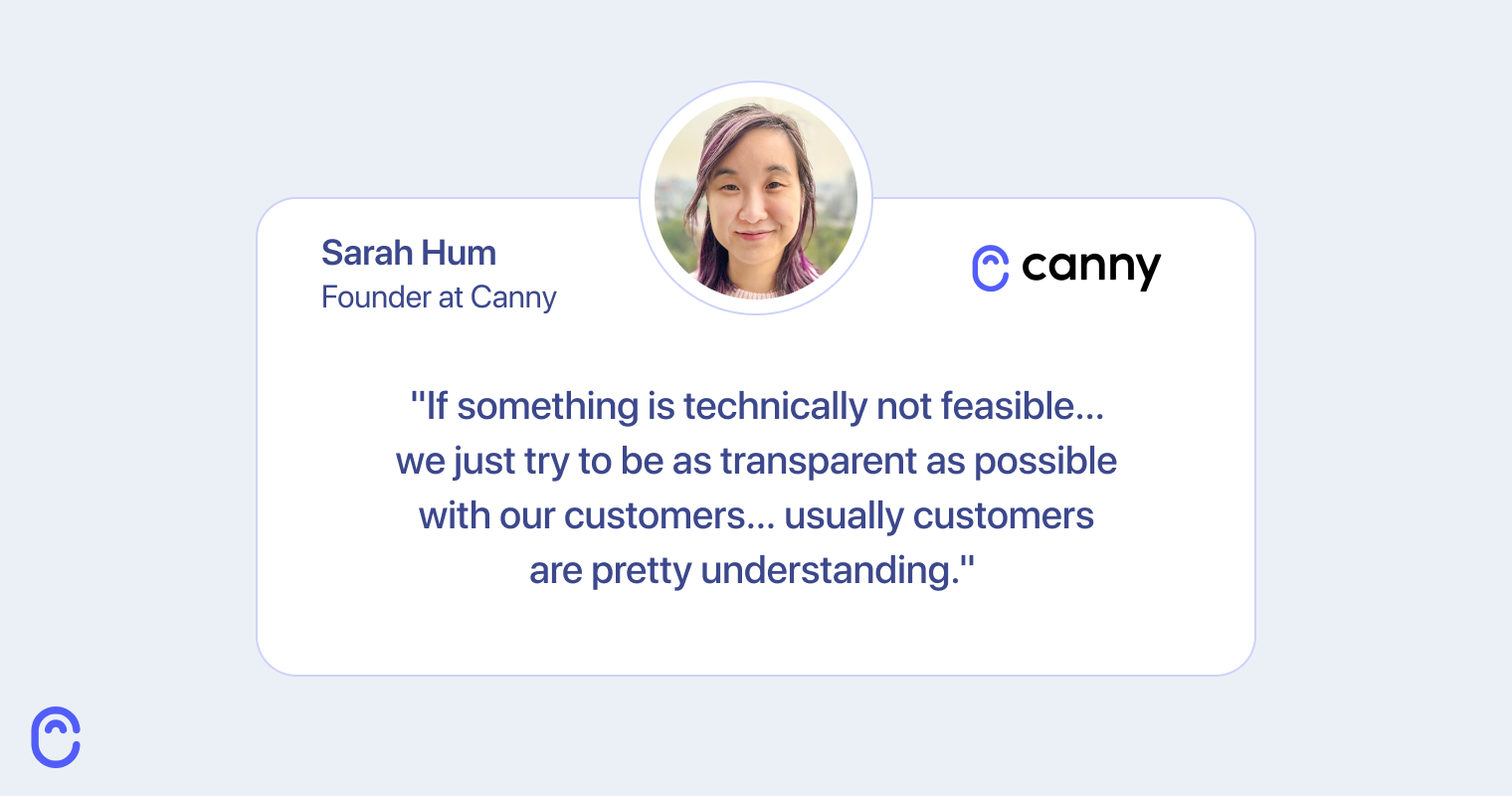
For platform parity, that means being honest about technical constraints and experience tradeoffs. For competitor parity, it means explaining why you’re intentionally not copying a feature, and what you’re doing instead.
What to try:
- Document technical or strategic constraints internally
- Communicate via Canny changelogs, status updates, or by commenting directly on feature requests
- Offer timelines or better-aligned alternatives when parity isn’t possible
- Frame competitor gaps as intentional tradeoffs when they support a clearer product vision
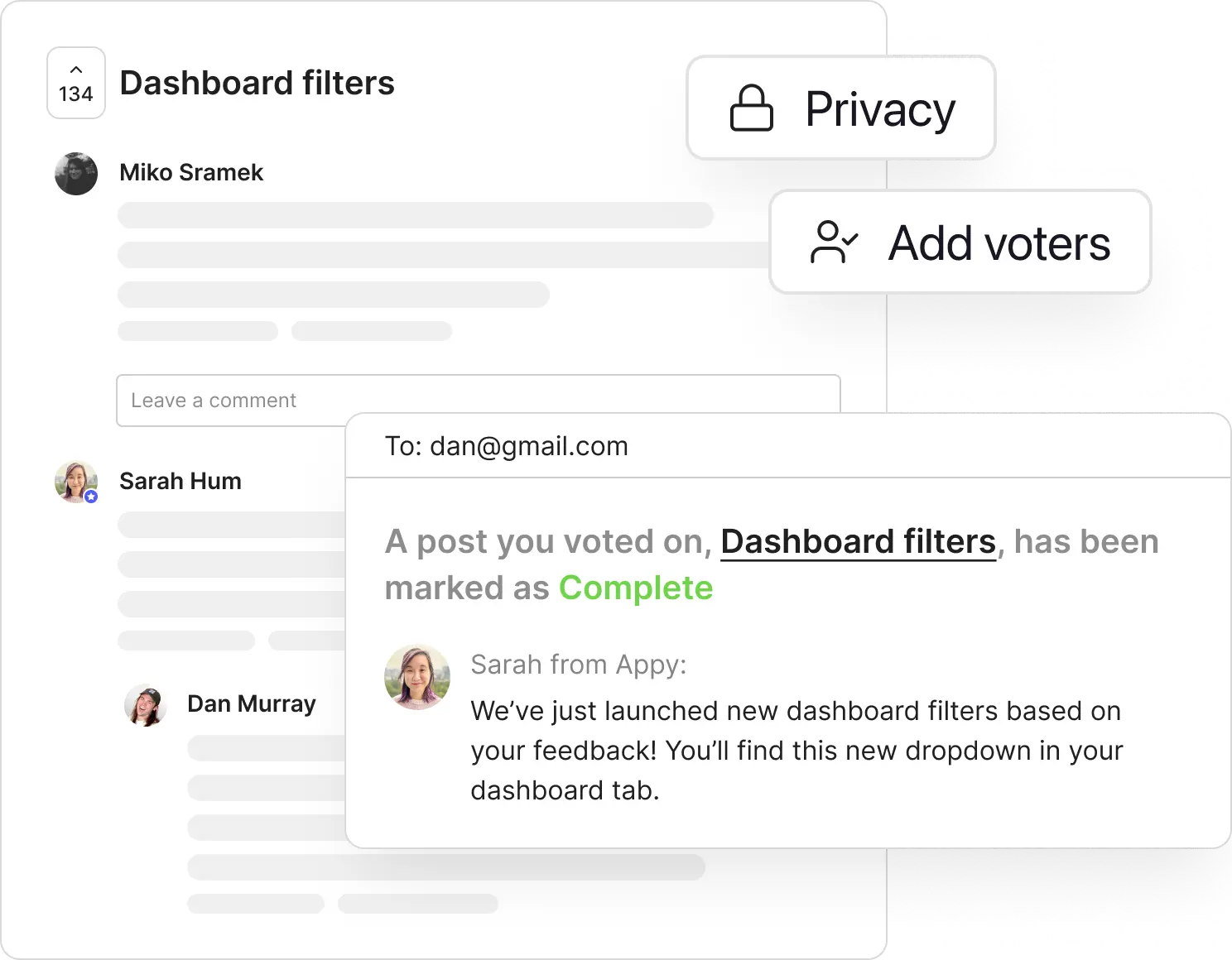
6. Mobile parity vs. mobile optimization
Mobile parity doesn’t mean duplicating your desktop app line-for-line. Sometimes what works on a big screen just doesn’t translate.
Elisa Daniela Montanari, Head of Organic Growth at Wrike, explained it this way:
“The mobile version must include all the content found on the desktop version while also providing an exceptional user experience.”
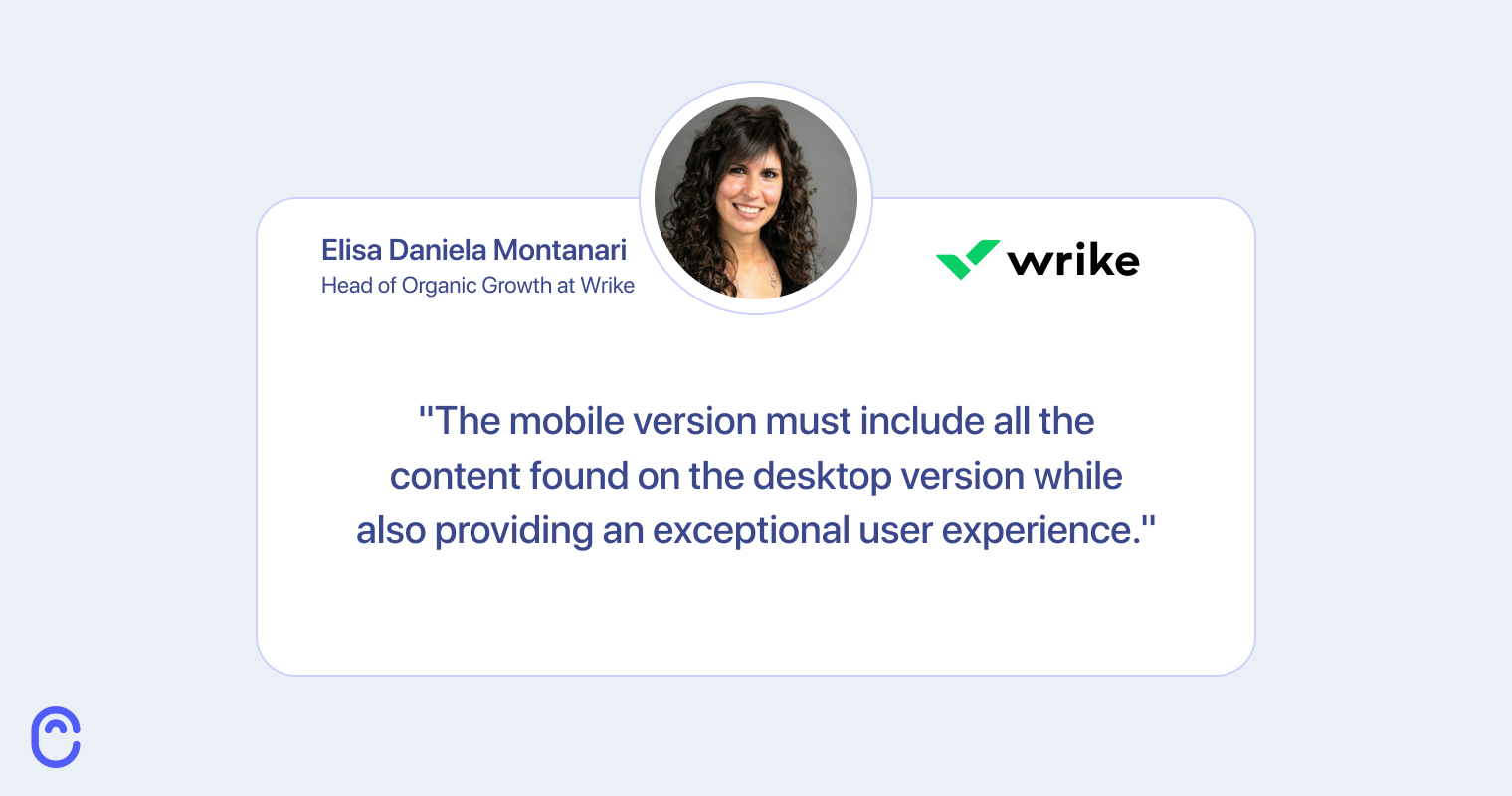
The goal is not strict one-to-one parity but functional parity that respects the context of use.
Many teams use Canny to tag feedback by platform (e.g., mobile, web, desktop) to track which user workflows feel broken or missing. That way, they’re not guessing which features actually need parity—they’re responding to what mobile users are struggling with.
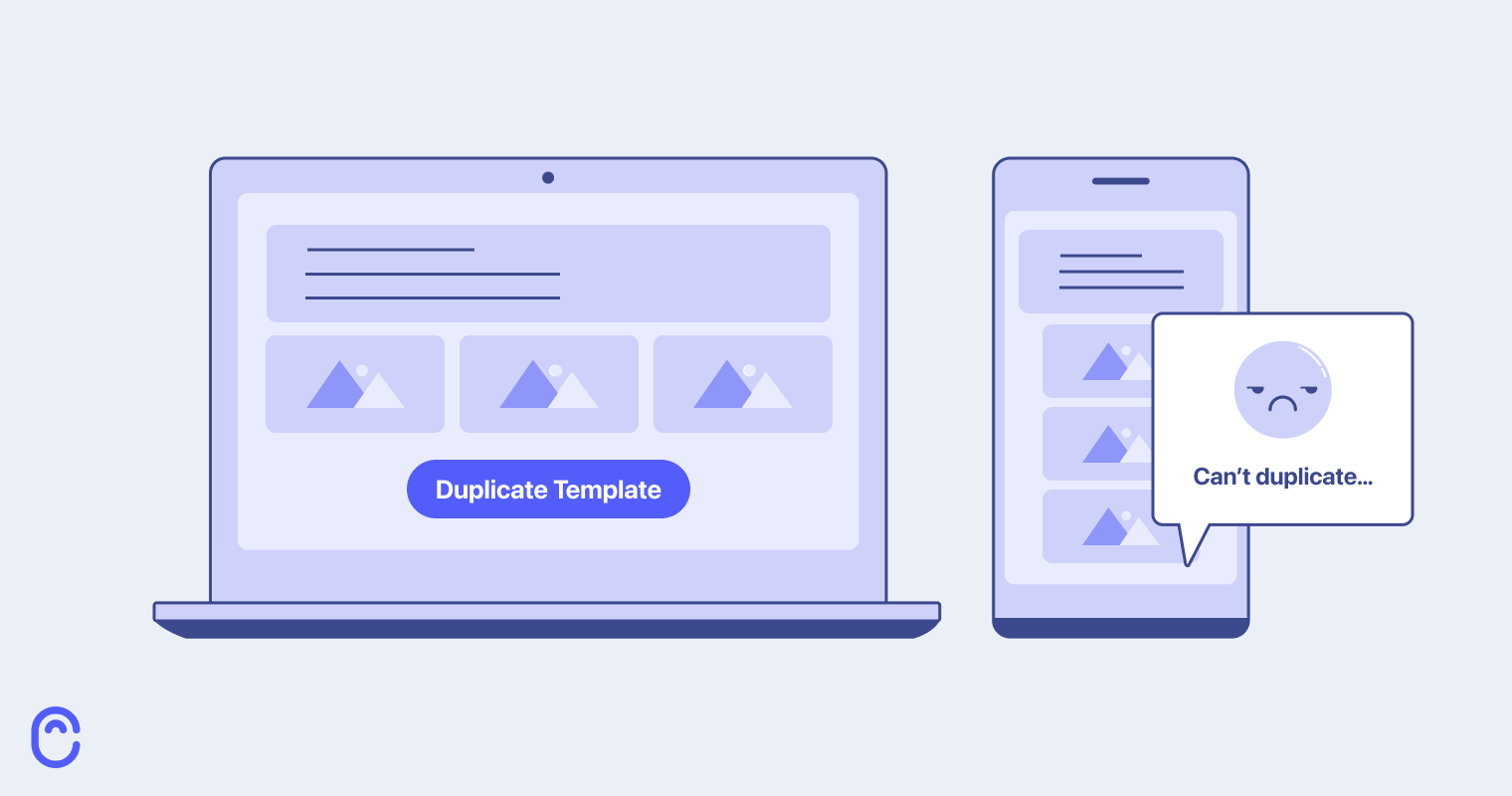
For platform parity, that might mean prioritizing the most-used workflows on mobile while leaving out edge cases.
What to try:
- Run mobile-specific usability tests
- Use Canny to filter and tag mobile-only requests
- Track mobile usage and pain points across platforms and competitors
- Design for intent and context—don’t force 1:1 parity where it’s not needed
